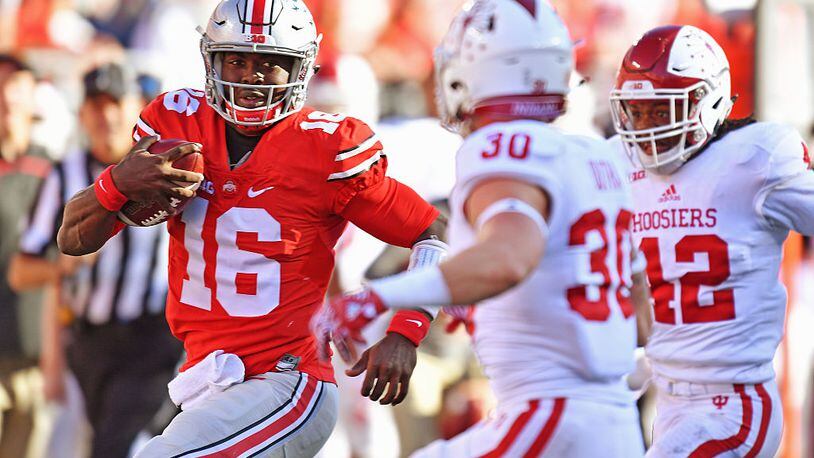We enlisted the help of an Xs and Os guru to see if we could get to the bottom of it.
Ross Fulton broke down the game film for BuckeyeGrove.com, as he does on a weekly basis, and ferreted out some issues.
Here is what we came up with as far as potential solutions:
1. Mix things up.
At the risk of sounding overly simplistic, Penn State was able to stop Ohio State mostly because it knew how Ohio State wants to run and pass in a perfect world. That would be “straight ahead” and “deep,” respectively.
The Nittany Lions put too many in coverage to allow throwing deep balls and too many people in the box to run the ball. Not surprisingly, that worked pretty well.
“I was not surprised in the sense that PSU was executing a common strategy against Urban Meyer’s OSU offense,” Fulton said. “Which is sell out up front to stop the run while playing a deep zone to protect against the deep, play action passing game.”
That means Ohio State has to break tendencies (throw on running downs, pass on running downs) to punish such strategies in the future.
This could also include mixing up blocking schemes.
2. Unleash J.T. Barrett
This is something both the coaches and the quarterback himself need to work on.
While they are understandably reluctant to do so based on the injury history of Meyer quarterbacks (including Barrett), the Buckeyes must call more runs for him.
He could probably also stand to try to be less perfect when he drops back to pass. Turnovers are never acceptable, but sometimes a little risk is necessary to move the chains.
“There are open throws he doesn’t take,” Fulton said. “For better or worse he’s pretty conservative.”
3. Trust the receivers.
Penn State’s reliance on zone belied the, “OSU’s receivers can’t get separation,” narrative, but Fulton observed Barrett appears to be more comfortable throwing to Noah Brown, Curtis Samuel and Dontre Wilson than the rest of his talented and mostly unproven cast.
Sometimes Barrett, who has had bouts of indecisiveness in Ohio State’s last two losses, needs to give his guys a chance to win, whether that is by fitting the ball into a tight spot or throwing up a 50/50 ball from time to time.
4. Feed Curtis Samuel.
Here’s one narrative that is right on the money. Samuel’s explosiveness blows up coach’s whiteboards. He can make the defense wrong by breaking tackles and outrunning angles.
“When you have to grind out every yard, all it takes is one misstep to end a drive,” Fulton said. “OSU’s problem is that they really only have one truly explosive player in Curtis Samuel. That is why he cannot only touch the ball 10 times.”
5. Block better.
This is probably the biggest issue as it feeds multiple other problems.
While Meyer has had the luxury of great offensive line play throughout his time in Columbus, it appears lack of faith in pass protection probably plays a role in Ohio State’s perplexing play calling.
With a better line in 2014, Barrett threw downfield far more than he has been asked to since returning to the starting lineup last season.
An emphasis on our No. 1 solution could make this one easier to achieve, but at the end of the day sometimes football just comes down to beating the man across from you consistently.
About the Author
